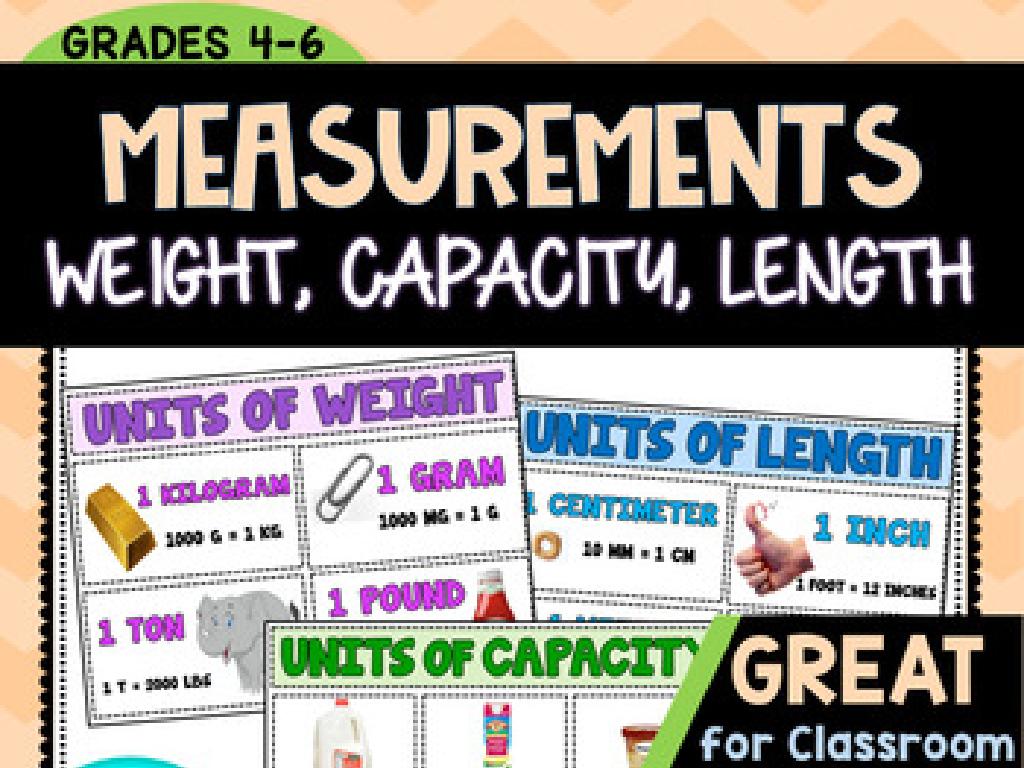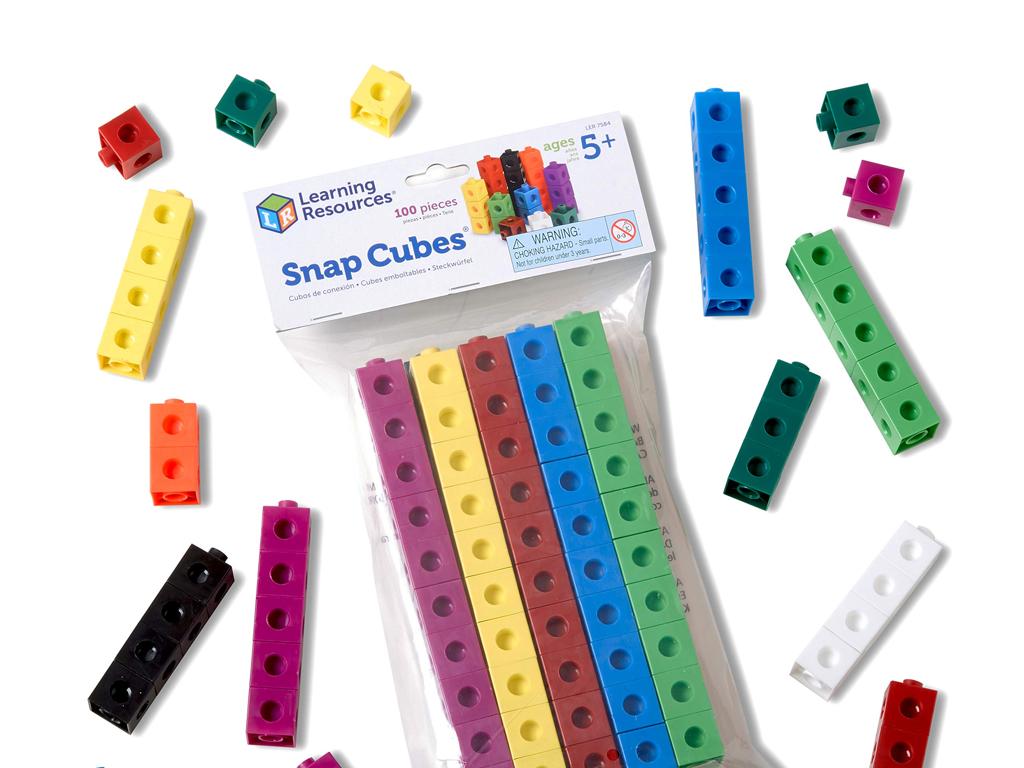Find Fractions Equivalent To Whole Numbers
Subject: Math
Grade: Third grade
Topic: Fractions Equivalent To Whole Numbers
Please LOG IN to download the presentation. Access is available to registered users only.
View More Content
Today’s Adventure: Fractions Equivalent to Whole Numbers!
– What is a fraction?
– A fraction represents a part of a whole.
– Exploring whole numbers
– Whole numbers are counting numbers like 1, 2, 3.
– Fractions equal to 1
– When the top number (numerator) is the same as the bottom number (denominator), the fraction equals 1.
– Finding equivalent fractions
– Multiply the numerator and denominator by the same number to find equivalents.
|
Begin the lesson by explaining the concept of a fraction, emphasizing that it represents a part of a whole. Introduce whole numbers as the basic counting numbers that students are already familiar with. Explain that a fraction is equivalent to a whole number when the numerator and denominator are the same, resulting in a value of 1. Demonstrate how to find equivalent fractions by multiplying the numerator and denominator by the same number. Use visual aids like fraction circles or bars to help students visualize the concept. Encourage students to practice with simple examples and reassure them that understanding will grow with practice.
Understanding Fractions
– A fraction is part of a whole
– Numerator and denominator explained
– Top number is the numerator, bottom number is the denominator
– Examples of fractions
– Like 1/2 (half), 3/4 (three quarters), 2/3 (two thirds)
– Fractions equivalent to 1
– 2/2, 3/3, 4/4 are all equal to 1 whole
|
Begin by explaining that a fraction represents a part of a whole, like a slice of pizza out of a whole pizza. Introduce the terms numerator and denominator, ensuring students understand that the numerator is the number of parts we have, while the denominator is the total number of equal parts the whole is divided into. Provide clear examples of fractions, using visual aids if possible, to illustrate parts of a whole. Highlight that fractions such as 2/2, 3/3, and 4/4 are special because they are equivalent to 1 whole, which is an important concept when finding fractions equivalent to whole numbers. Encourage students to think of other examples and to visualize the fractions to aid understanding.
Whole Numbers as Fractions
– Every whole number is a fraction
– Whole number as numerator
– The top number of a fraction, like 4 in 4/1
– Denominator is always 1
– 1 is the bottom number, making it a whole
– Example: 3 equals 3/1
– Turning the whole number 3 into a fraction
|
This slide introduces the concept that every whole number can be expressed as a fraction. The key takeaway for the students is that the whole number becomes the numerator (the top part of the fraction), and the denominator (the bottom part) is 1. This is because any number divided by 1 is itself. Use the example of 3 being written as 3/1 to illustrate this point. Encourage students to practice with different whole numbers, converting them into fractions with a denominator of 1. This will help them understand that fractions and whole numbers are closely related and that fractions are another way to represent whole numbers.
Making Equivalent Fractions
– What are equivalent fractions?
– Fractions that have the same value, but look different
– Making fractions equivalent
– Multiply top and bottom by the same number
– Example: Fractions equal to 1
– 2/2, 3/3, 4/4 all represent the whole number 1
– Practice finding equivalents
|
This slide introduces the concept of equivalent fractions to third-grade students. Begin by explaining that equivalent fractions may look different but represent the same amount. Demonstrate how multiplying the numerator (top number) and the denominator (bottom number) by the same number will result in a fraction equivalent to the original. Use 1 as an example, showing that 2/2, 3/3, and 4/4 are all ways to write 1 using different fractions. Encourage students to practice with other whole numbers, guiding them to understand that there are infinite equivalent fractions for any given number. Provide additional examples and plan hands-on activities where students can create their own sets of equivalent fractions.
Practice Time: Equivalent Fractions to Whole Numbers
– Understand equivalent fractions
– Whole number 2 as a fraction
– 2 can be written as 2/1
– Multiply numerator & denominator
– Use the same number for both to keep the value the same
– Find fractions equal to 2
– Examples: 2/1 = 4/2 = 6/3 = 8/4
|
This slide is an interactive practice for students to understand the concept of equivalent fractions for whole numbers. Start by explaining that equivalent fractions are different fractions that represent the same value. Use the whole number 2 as an example, showing that it can be expressed as a fraction (2/1). Demonstrate how multiplying both the numerator (top number) and the denominator (bottom number) by the same number does not change the value of the fraction. Provide several examples, such as 2/1, 4/2, 6/3, and 8/4, and explain that they all equal 2. Encourage students to come up with their own equivalent fractions for 2. This activity will help solidify their understanding of fractions and equivalence.
Class Activity: Fraction Hunt
– Let’s go on a Fraction Hunt!
– Find objects with whole numbers
– Like 1 clock or 2 pencils
– Turn whole numbers into fractions
– 1 clock can be 1/1 or 2/2, 2 pencils as 2/1
– Share your fraction discoveries
|
This activity is designed to help students understand the concept of equivalent fractions in a fun and interactive way. Set up the classroom with various objects that can easily be counted by students. Guide them to find items and think of those quantities in terms of whole numbers first. Then, assist them in converting those whole numbers into equivalent fractions, reinforcing the idea that a whole number can be expressed as a fraction where the numerator is equal to the denominator times the whole number (e.g., 1 can be 1/1, 2/2, 3/3, etc.). After the hunt, have students present their findings to the class, explaining how they converted the whole number to an equivalent fraction. This will help solidify their understanding and allow for peer learning.
Fantastic Fractions Finale
– Congratulations on learning fractions!
– Whole numbers as fractions tip
– Any whole number can be written as itself over 1, like 3 = 3/1
– Practice finding equivalent fractions
– Try different numbers to see what other fractions are the same
– Keep up the great work!
|
This slide wraps up the lesson on fractions equivalent to whole numbers. Reinforce the concept that any whole number can be expressed as a fraction by placing it over 1. Encourage the students to continue practicing with different whole numbers to find various equivalent fractions, reinforcing their understanding through repetition. Remind them that learning is a journey, and the more they practice, the better they’ll get at finding equivalent fractions. Celebrate their achievements in this lesson and motivate them to keep practicing at home or in their free time.






